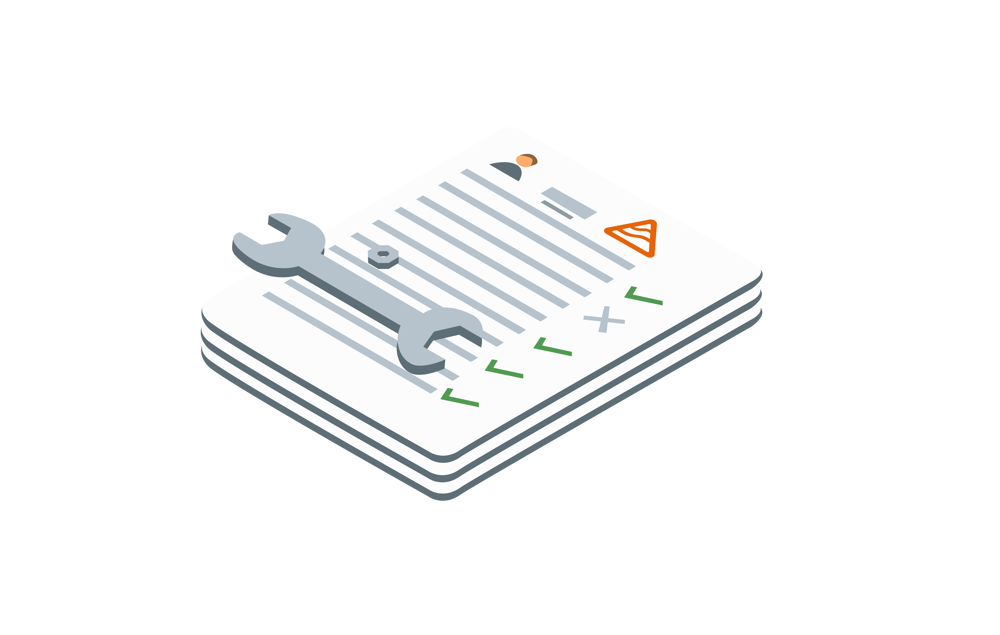We are delighted to unveil version 1.8.0 of Dastra, a major update that celebrates the introduction of an AI governance module and a contract management module. This new version marks a significant milestone in the evolution of our platform by integrating advanced tools to anticipate the imminent release of the AI Act and strengthen the management of all your contracts in compliance with the GDPR.
And that's not all! For the next three months, we are offering free access to these two modules. Take advantage of this opportunity to explore their capabilities and optimize your data management. This is our way of thanking you for your trust and supporting you in your digital transformation.
🚀 New features
AI Governance module
We have introduced a new AI governance module to ensure compliance with the AI Act. To learn more, check out this article on the AI Act.
The objective of this new feature is to design and maintain a register of AI systems and to list the different AI models used.
The topic of AI can sometimes be complex, but no worries, we have defined and clarified all the concepts covered in this module. You will find these details in the Dastra documentation, as well as in the tooltips you will encounter during your use of the application.
AI Systems Register
This new register is presented in the same way as the data processing register. You have access to a list where each use of AI within your company is referenced; this is called an AI system.

When you register a new AI system, you have a form to complete. This form will ask you for all the information regarding this use of AI. You just have to follow and complete the different steps.
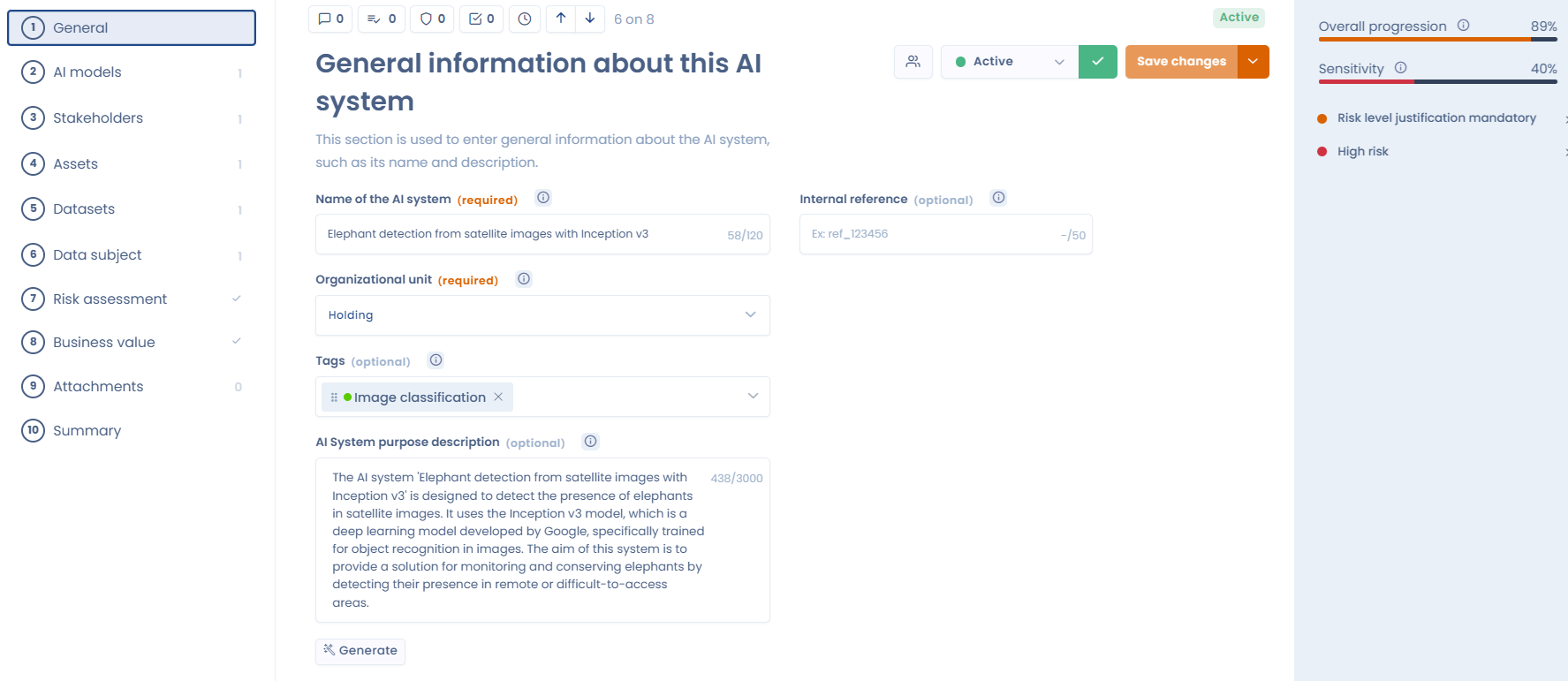
Repository of AI Models
The AI Act defines an AI model as a system capable of processing data to produce results such as predictions, recommendations, or decisions influencing real or virtual environments. These systems use various techniques.
In the AI governance module, you can list the AI models used. A model contains information such as its publisher, version, learning type, etc.
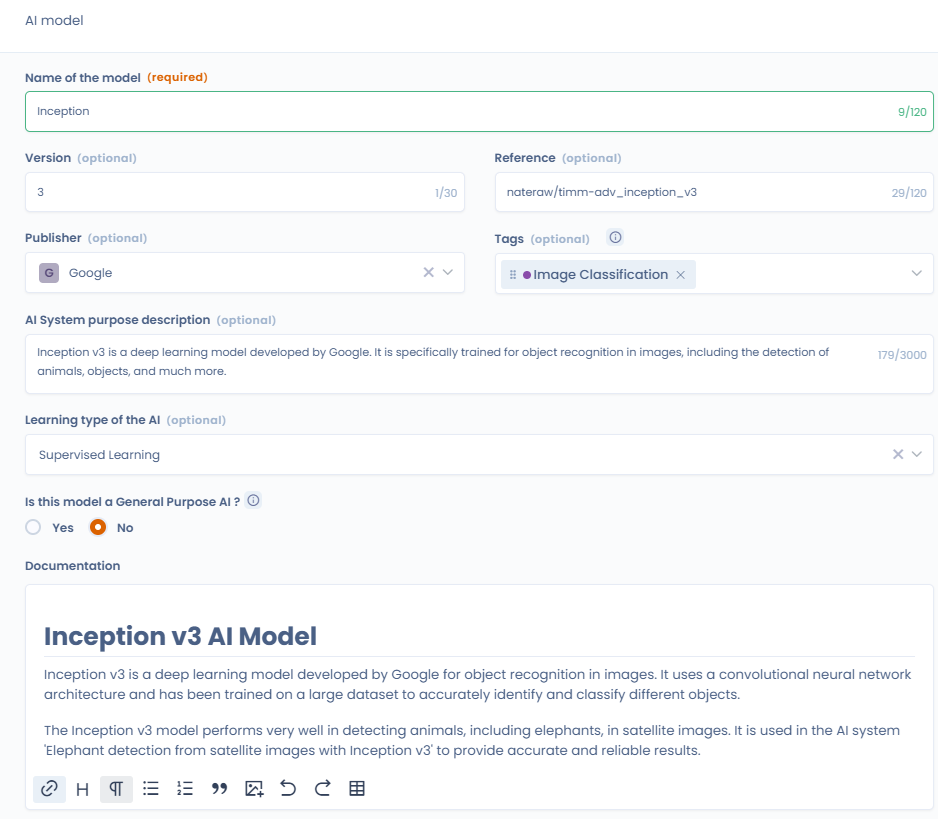
These models can later be linked to the AI systems that use them. Thus, for each use of AI, we can know which model is used and for what purpose. This also allows linking publishers (assets) to your AI systems.
Risks and Benefits
The European text establishes a framework for managing risks associated with the use of artificial intelligence.
For AI usages, 4 levels of risks are defined: minimal, limited, high risk, and unacceptable risk. The risk level of a usage is defined according to its use, as shown in the screenshot below.

At the same time, you can define an added value to the AI system. Depending on its benefit to the company, an AI system will have more or less value. Thus, a usage with low risk and high benefit will be an opportunity. This feature allows you to identify AI systems that are opportunities, or on the contrary, low useful risks.
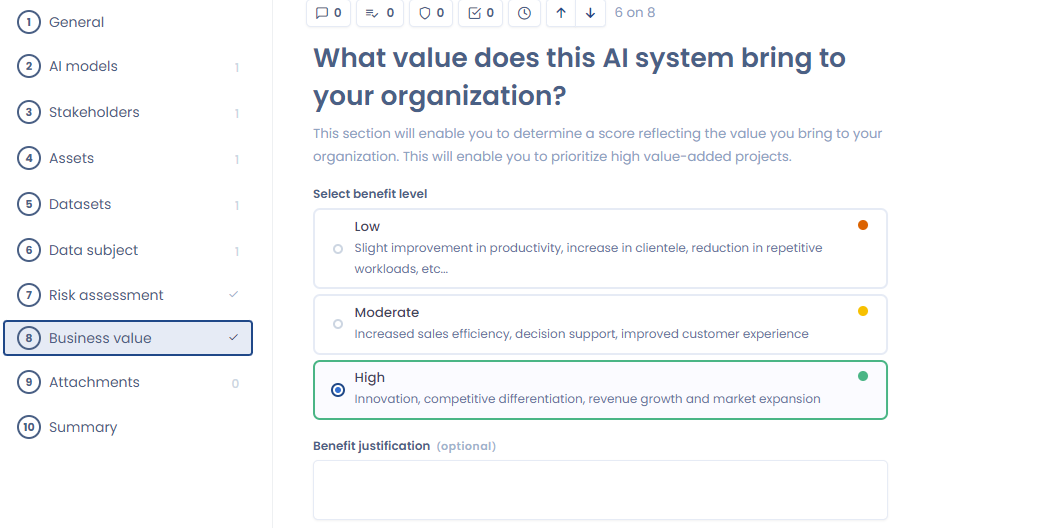
There are also inherent risks in the AI models used, such as systemic risk, which refers to a risk that can significantly and on a large scale affect economic, social, or technological systems.
For example, a poorly used AI model could disseminate false information on a large scale, compromise critical infrastructures, or bias important decisions in areas such as justice or finance.
In Dastra, you can define whether an AI model presents systemic risk or not.
Contract Management
We are pleased to introduce our new contract management module integrated into Dastra. This module allows you to declare and manage all your contracts related to the GDPR, such as Data Processing Agreements (DPAs) and your contracts for the framework of transfers outside the EU/EEA, directly on our platform. You can easily manage signatures, whether they are manual or electronic, thanks to our integration with DocuSign, and track versions of your documents.
But that's not all: contracts can be generated from templates provided by Dastra in just a few clicks. Simplify and secure the management of your contracts with our all-in-one solution.
This module is available for free for the next three months, and will then be integrated into our pro pricing in September.
Create contracts from powerful templates
Our platform allows you to declare contracts in two ways:
- Starting from scratch and associating your contractual documents directly from your ECM system or by uploading attachments.
- Using our new contract template system. Answer a few simple questions to select the necessary options for the template, and generate a complete (and editable before generation) PDF/Word document, such as a DPA, in just a few clicks. This process saves you valuable time.
- This new system is integrated with the processing register and allows you to generate a DPA directly from the recipients of your processing (the processing information will automatically populate the contract template).
For now, the contract module is available with the DPA template, but other templates, such as those to frame transfers outside the EU/EEA, will soon be available on the platform!
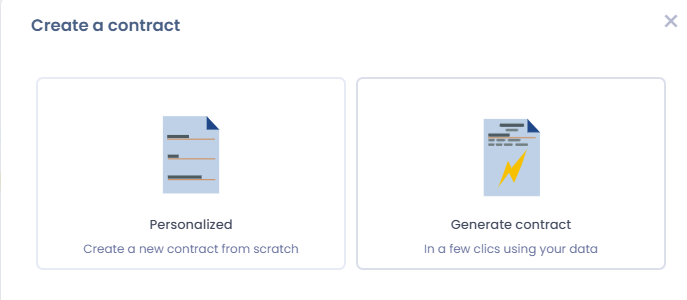
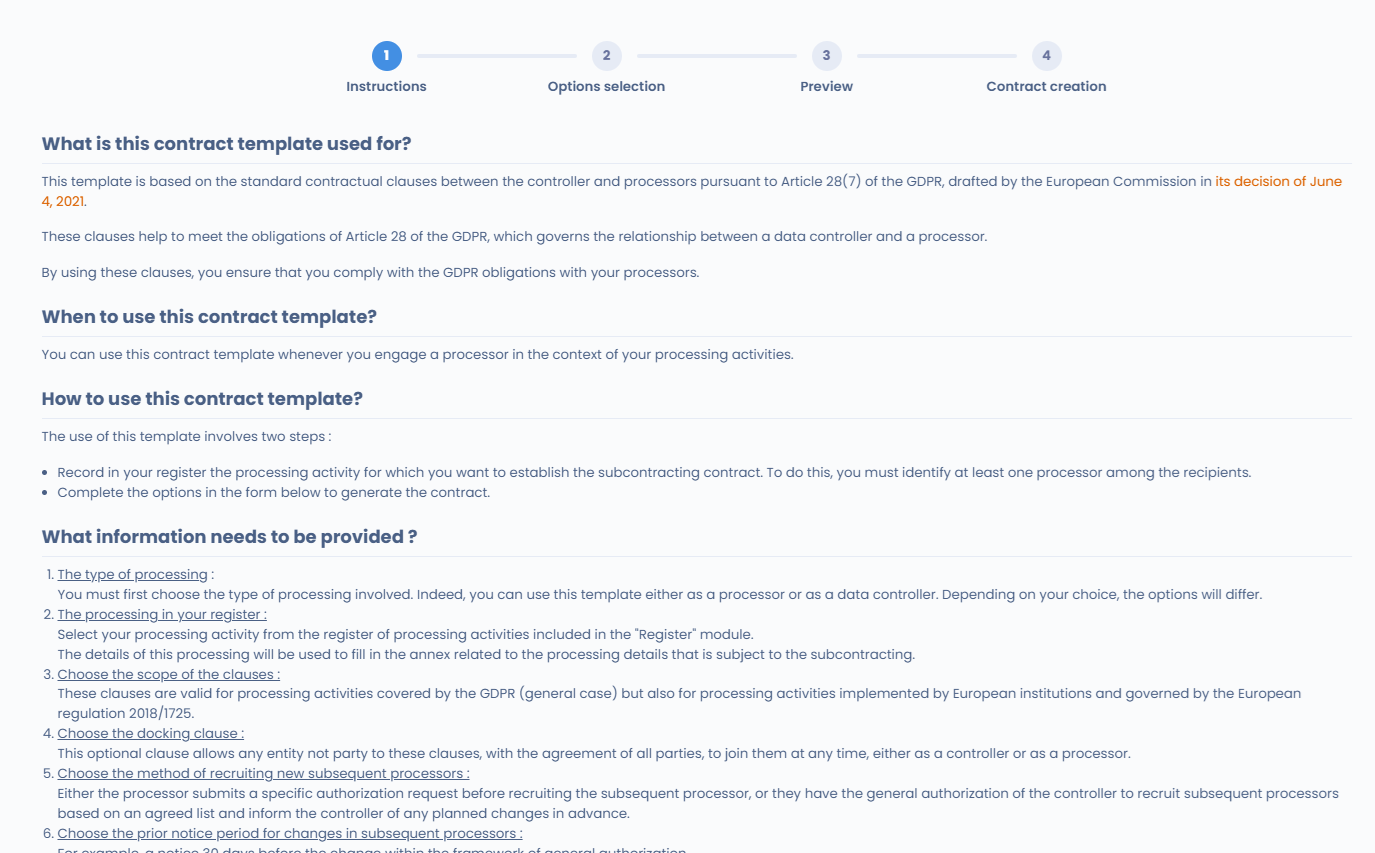
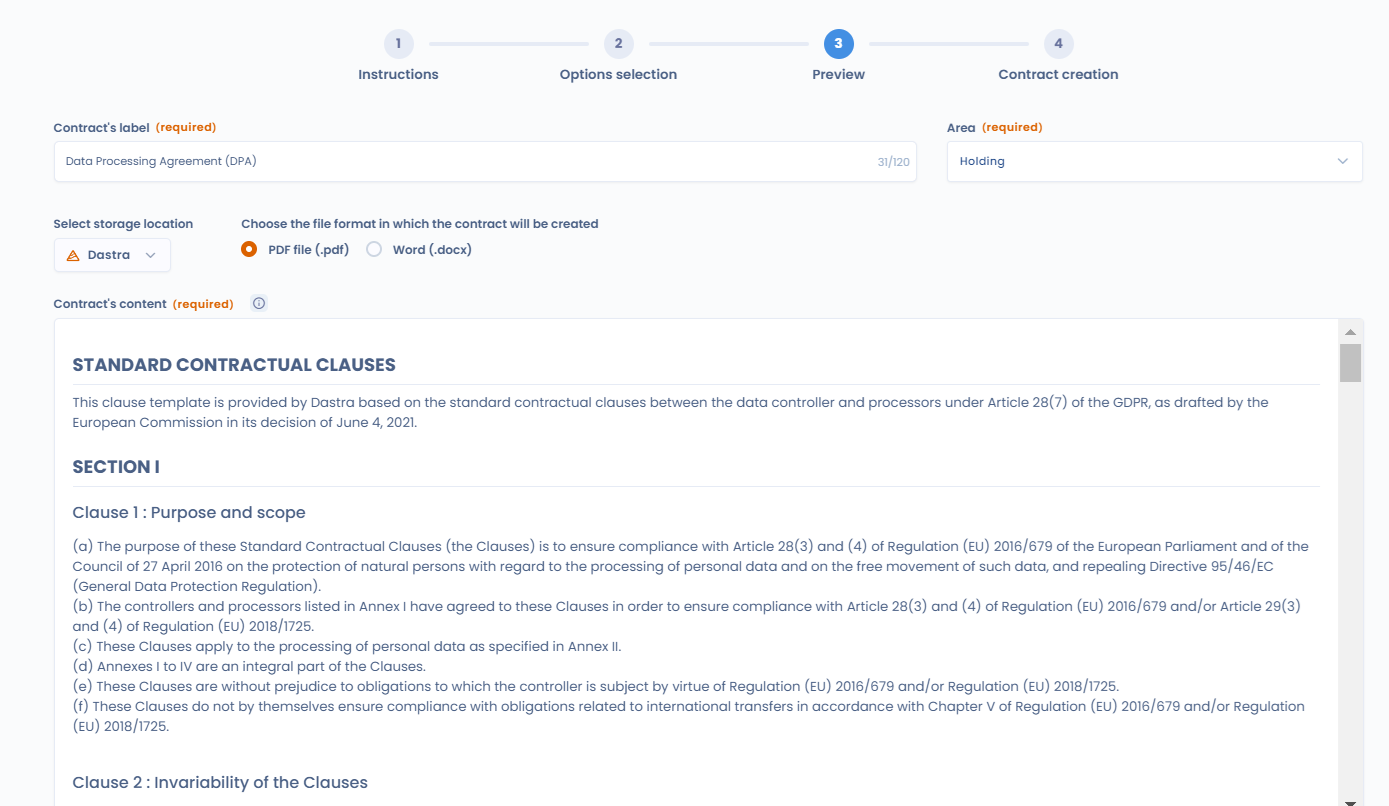 Get your complete DPA filled in with information from your register
Get your complete DPA filled in with information from your register
Focus on attachments
In order to highlight your contractual documents and their attachments, we have given them a prominent place on the screen. This way, your documents remain visible and easily accessible at each step of the declaration of your contract, offering you a smooth and intuitive user experience.
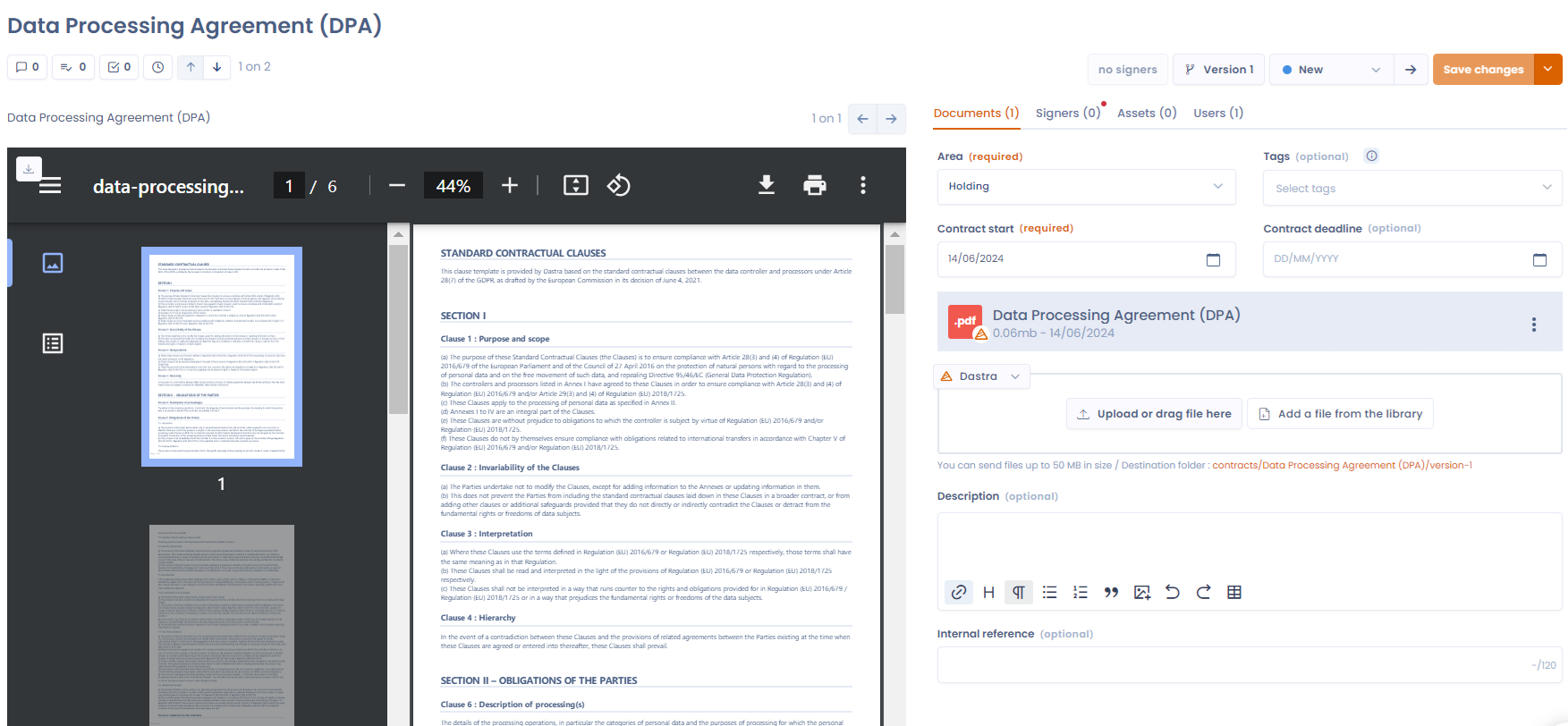
Versioning
To track modifications, updates, or renewals, you can version your contracts. Each version is tracked by an automatically incremented revision number. You can browse and manage the different versions of a contract using the version manager provided.
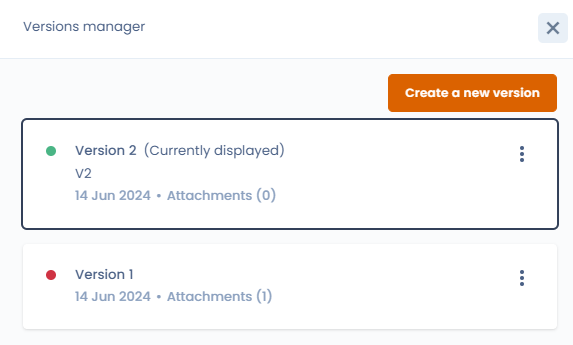
Signature Management
Our platform offers full flexibility in terms of signature management. You have the option to manually declare signatures, giving you direct control over the process. Alternatively, thanks to our integration with DocuSign, the global leader in electronic signatures, you can also opt for a secure and efficient digital approach. This integration allows you to manage the entire signature process seamlessly, from sending documents to collecting signatures, ensuring the legality and authenticity of each transaction. Whatever your preference, we provide you with the necessary tools to simplify and accelerate the contract signing process.
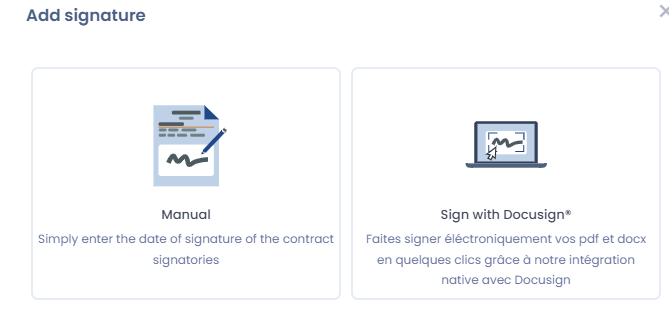
Email integration
We have added the ability to transform an incoming email on a collecting mailbox into a contract with associated attachments.

AI-generated Purposes and Retention Periods
Use our AI to automatically generate data purposes and retention periods, making compliance with regulations easier.
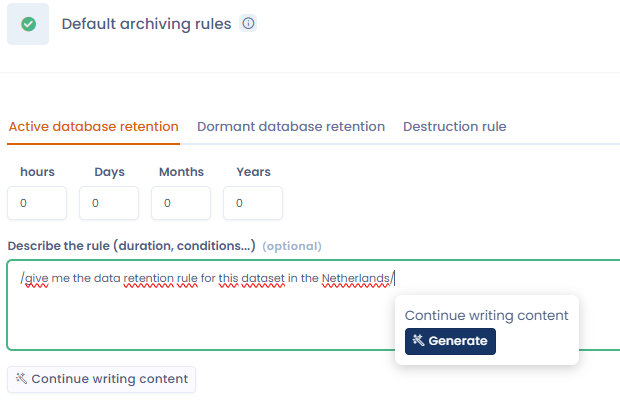
✨ Improvements
- User export: Improved user export with associated rights for more transparent management.
- Role import: Easily import roles into the module for quick configuration.
- Form template: New form template for asset creation, facilitating resource management.
- Generalization of regular review (formerly freshness): Regular data review feature is now available in the processing register, actors, assets, contracts, AI systems, and control points.
- Expandable navigation: Improved and expandable left side navigation menu for a smoother user experience.
- Workflow duplication: Easily duplicate your workflows to save time.
- Email integration: You can now link your collecting email addresses (request collection, contract collection, etc.) to a specific organizational unit so that automatically generated items are associated with that organizational unit.
- Report table editing: You can now revisit the selection of custom report tables after the initial report creation.
- Invoice display: View your invoices directly here.
- Communication filters: Added filters for better management of communications in data breaches.
- Recipient department filter: Filter processing recipients by department for more accurate management.
🐞 Bug fixes
- Quality calculations: Fixed quality, progress, and sensitivity calculations within data processing activities for increased accuracy.
We hope you will enjoy this new version of Dastra and we look forward to hearing your feedback!
The Dastra Team 🧑🚀
